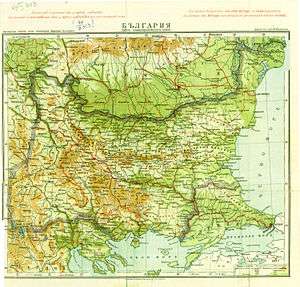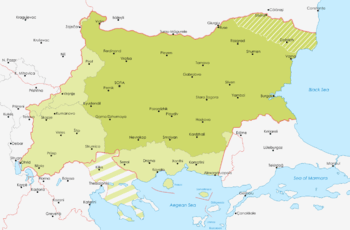Greater Bulgaria

Greater Bulgaria is a term to identify the territory associated with a historical national state and a modern Bulgarian irredentist nationalist movement which would include most of Macedonia, Thrace and Moesia.
History

Greater Bulgaria was suggested under the Treaty of San Stefano.
The issue of irredentism and nationalism gained greater prominence after the creation of modern Bulgaria following the 1878 Treaty of San Stefano. However the Congress of Berlin took back some of those territories, returning them to the control of the Ottoman Empire.
In the early 20th century control over Macedonia was a key point of contention between Ottoman Empire, Bulgaria, Greece, and Serbia who fought both the First Balkan War of 1912–1913 and the Second Balkan War of 1913. The area was further fought over during the Macedonian Campaign of World War I (1915–1918).

Just before entering World War II, Bulgaria had peacefully secured the return of Southern Dobruja from Romania in the Treaty of Craiova.[1] During World War II some of the territories in question were briefly added to Bulgaria by Nazi Germany, as a reward to Bulgaria, which had fought with Germany as one of the Axis powers. It was granted territory in Greece, namely Eastern Macedonia and parts of Western Thrace, as well as Yugoslav Macedonia (Vardar Macedonia).[2] With the exception of the Southern Dobruja, these concessions were reversed with the Allied victory (see the Paris Peace Conference).
References
- ↑ "Bulgaria During World War II". Retrieved 2007-02-12.
- ↑ Bulgaria During the Second World War, Marshall Lee Miller, Stanford University Press, 1975, ISBN 0804708703, p. 128.
External links
| Wikimedia Commons has media related to Greater Bulgaria. |